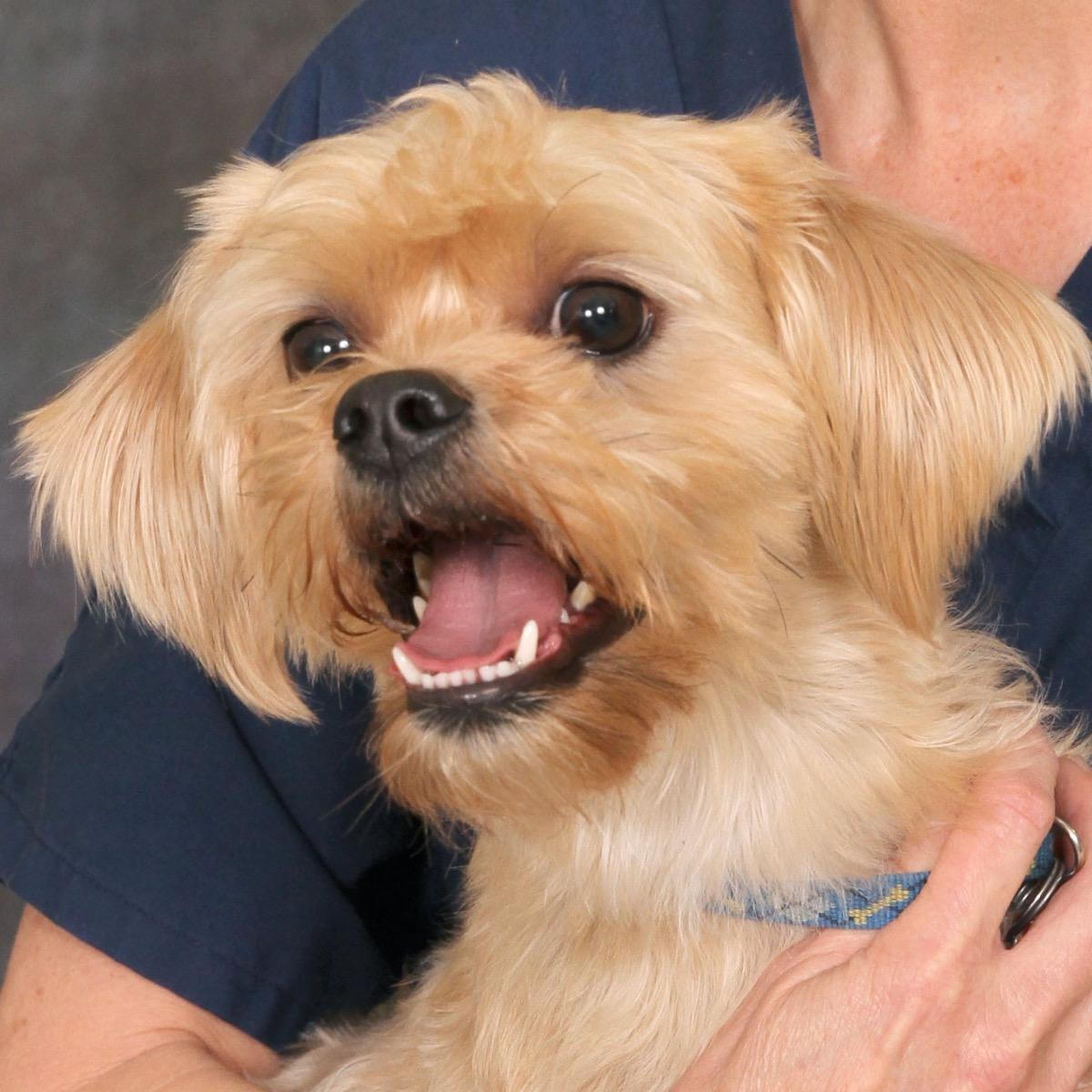February is Pet Dental Health Month!

- posted: Feb. 20, 2018
February is Pet Dental Health Month. Even though your pet’s dental health is important year-round, this month helps us shine the spotlight on dental care. The American Veterinary Medical Association estimates that by the age of two, 80 percent of dogs and 70 percent of cats have some form of periodontal disease. Often in pets, the first sign of dental problems is a bad smell from the mouth. Even with a bad smell and severe dental problems, pets will continue to eat. Bad breath and tartar can be fixed.
Ideally, pets’ teeth should be brushed daily. Brush the outside of your pet’s teeth with an enzymatic dog/cat toothpaste (CET brand, for example); human toothpaste is a different pH and not meant to be swallowed. Many animals can be taught to tolerate tooth brushing by using it as a treat or using a special flavored toothpaste, like poultry.
While it may seem like a lot, daily brushing is important because it removes plaque. Plaque is the filmy, soft deposits that food leaves behind on teeth. If plaque stays on teeth for 24 to 48 hours, it hardens to tartar. You can’t brush away tartar, because it becomes mineralized from saliva – think of barnacles on the bottom of a boat. For pets that resist daily brushing, brushing occasionally is better than not at all.
If your pet already has issues with tartar, consult with your veterinarian about a dental cleaning. Similar to human dentists, your veterinarian will scale the whole tooth, including under the gum line. Cleaning under the gum line is the most important step as it removes hidden bacteria that can cause abscesses and tooth decay. At Taylor Veterinary Hospital, scaling involves using specialized handheld and ultrasonic instruments to remove tartar. After removing the tartar, the veterinarian performs a thorough exam to determine the health of all the teeth and mouth. Then, teeth are polished to smooth the enamel (outside) layer, and a fluoride application helps re-mineralize the enamel layer of the teeth and works to decrease plaque build-up in the future.
Since animal patients don’t sit patiently in the chair with their mouths open, dental cleanings require general anesthesia. While under anesthesia at our hospital, pet patients are asleep with continuous vital monitoring from a technician throughout the entire procedure. A proper cleaning cannot be done without intubation and inhalant anesthesia. Forms of anesthesia-free teeth cleaning you may hear about are not much more than tooth brushing, since they do not clean the teeth fully (under the gumline and inside of the mouth), don’t include polishing, fluoride treatment, an exam, and they are not performed by trained professionals.
Veterinarians can also help with dental emergencies, extracting diseased or painful teeth, bonding or sealing chipped teeth, or repairing jaw fractures. Be sure to ask your veterinarian specific questions so you both can have a dialogue on the procedure, anesthesia, aftercare, and needs specific to your pet. For more, including a detailed video of how to train your pet for tooth brushing, please visit Taylor Veterinary Hospital at www.taylorvet.com or follow us on Facebook at www.facebook.com/TaylorVet.
By Dr. Wendi Goetsch, Taylor Veterinary Hospital


